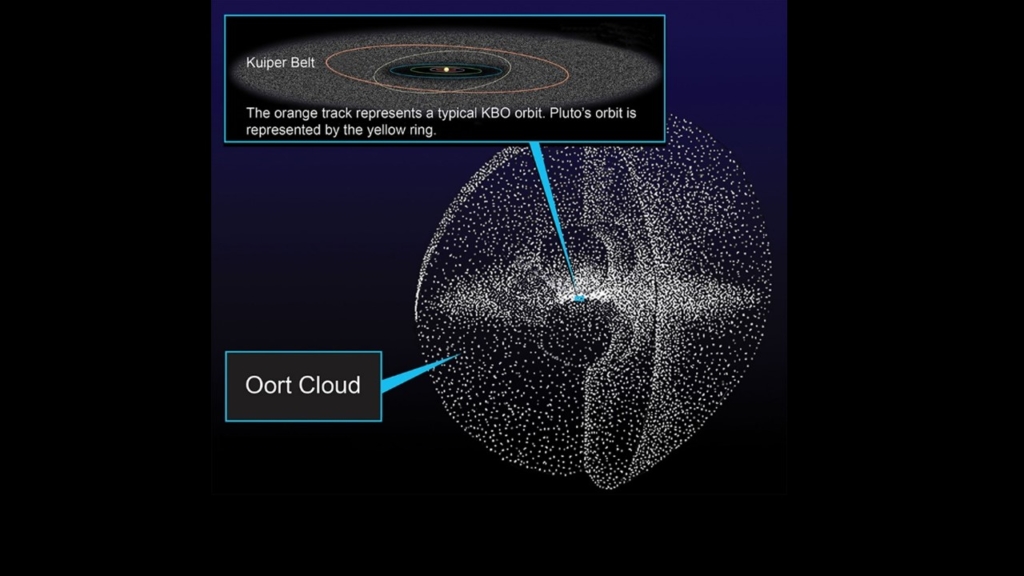Oumuamuas with alien mines could visit our Solar System
Written by LifeIntheUniverse.com team

An illustration of the Kuiper Belt and the Oort Cloud of the Solar System. Image Credit: NASA.
As Earth’s finite resources dwindle, scientists and engineers increasingly contemplate a novel strategy: mining asteroids for their resources. This is because some asteroids harbor rich deposits of rare metals like gold, silver, and platinum. Asteroids predominantly occupy the space between Mars and Jupiter, nestled within the main asteroid belt. However, recent studies by Andrew Shannon, Alan Jackson, Mark Wyatt, and Dimitri Veras have estimated that the Oort Cloud, which is the most remote region of the Solar System, plays host to approximately eight billion asteroids.
Large numbers of asteroids could reside in the Oort Clouds of other planetary systems as well.
In her research article titled “Planetary biotechnospheres, biotechnosignatures and the search for extraterrestrial intelligence” and published by International Journal of Astrobiology, Cambridge University Press, Irina K. Romanovskaya posits that hypothetical advanced civilizations inhabiting planetary systems hosted by aging stars would migrate away from their host stars turning into red giants; eventually, such civilizations would relocate to the Oort Clouds of their planetary systems. In the Oort Clouds, they could mine asteroids for their resources, just as in the not-so-distant future, humans could extract asteroid resources from the main asteroid belt within our Solar System.
Romanovskaya, who is a graduate of Rice University and a professor of physics and astronomy at Houston Community College, explains in the article that over time, the stellar activity of the dying stars would propel the asteroids with alien mines out of their planetary systems, turning them into interstellar objects akin to Oumuamua.
Romanovskaya proposes that on the rarest of cosmic occasions, these interstellar asteroids may traverse our Solar System, while carrying alien technologies, mines, and artifacts both on their surfaces and in their interior. The rarity of these celestial visitations depends on the total number of interstellar asteroids in our Milky Way Galaxy and the presence of spacefaring advanced civilizations scattered across the Galaxy.
Reference: Irina K. Romanovskaya, Planetary biotechnospheres, biotechnosignatures and the search for extraterrestrial intelligence, International Journal of Astrobiology (2023). DOI: 10.1017/S1473550423000204
Copyright © Irina K. Romanovskaya. All rights reserved.
